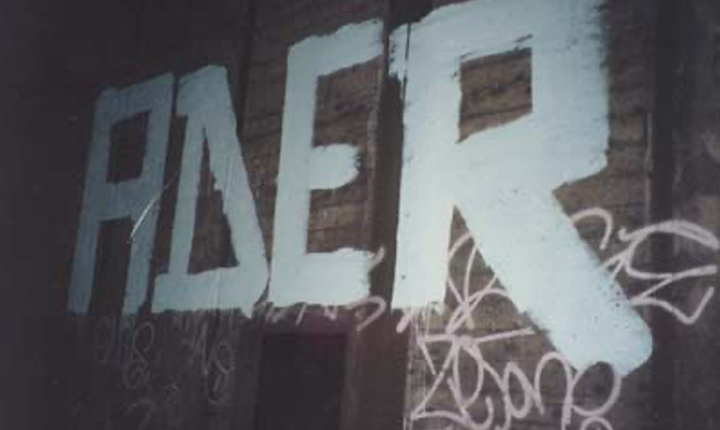Forms of Graffiti
The MTA's policy of removing marked subway cars from service gave birth to another form of bombing; Tunnel bombing. (Tunnel bombing consists primarily of tags and throw-ups. Pieces are rarely done.). During the period when painted cars ran most tunnels were not written on. It was a waste of time, effort and paint. The limited public exposure made it almost pointless. The only tunnel walls that were written on were layups. It was desirable to have your name in a layup because other writers would see your name.
In addition it was for some a way of claiming territory. Many writers chose not to write in layups because it clued police in on where they painted. Other than layups, a few abandoned subway stations were areas you would see writers' names. OE and P13 were exceptions. They pioneered tunnel bombing. Around 1980 they executed several substantial bombing missions specifically focused on tunnels.
When marked subway cars no longer ran writers sought other vehicles to status in the writing community. If you could no longer be king of the line, you could still take king of the tunnels. Since they were out of the general public eye, names in the tunnels were not systematically removed. Soon writers were bombing the tunnels with the same vigor they once applied to subway cars.
Bombing tunnels, even for the most experienced writer is significantly more dangerous than standard bombing. Painting on active tracks a writer must contend with oncoming trains and in many cases less clearance than found in layups. Taking such risks raised a writer's status in the writing community. In addition to traditional tag, Roll letters have developed. Roll letters are simple block letters rendered with a paint roller. Tunnel writers have included SMITH, JA, GHOST, ADER, PEAK, REVS,HOPE, X SOUP and many others.
History Page
Reproduction in whole or in part without permission is prohibited.

